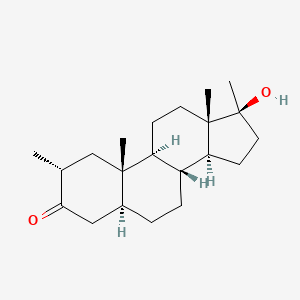Methasterone (Superdrol or Methyldrostanolone) Information
Click here to view all Methasterone (Superdrol or Methyldrostanolone) productsThe information, including but not limited to, text, graphics, images and other material contained on this website are for informational purposes only. No material on this site is intended to be a substitute for the consultation, diagnosis, and/or medical treatment of a qualified physician or healthcare provider.


Methasterone, also known as Superdrol or Methyldrostanolone, is an anabolic androgenic steroid (AAS) that was developed in the 1950s. It is a modified form of drostanolone (Masteron), with an added methyl group at the 17th carbon position, which enhances its oral bioavailability.
Superdrol is known for its potent anabolic effects, leading to increased muscle mass, strength, and performance. It works by binding to androgen receptors in the body, activating them to stimulate protein synthesis and nitrogen retention. This promotes muscle growth and recovery, allowing users to experience significant gains in a relatively short period.
Additionally, Methasterone has a low affinity for aromatase, an enzyme responsible for converting testosterone into estrogen. As a result, it has minimal estrogenic side effects, such as water retention or gynecomastia (enlargement of breast tissue in males).
However, it is important to note that Methasterone is a highly potent androgenic steroid, which means it can also lead to androgenic side effects. These may include oily skin, acne, hair loss, and increased aggression. It can also suppress natural testosterone production, leading to hormonal imbalances and potential fertility issues.
Due to its potential for adverse effects, Methasterone is classified as a controlled substance in many countries, and its use without a prescription is illegal. It is crucial to consult with a healthcare professional before considering the use of any anabolic steroid.
Synonyms of Methasterone (Superdrol or Methyldrostanolone)
- Methasterone
- Superdrol
- 3381-88-2
- Methasteron
- Methyldrostanolone
- 2,17-Dimethyldihydrotestosterone
- NSC 40490
- (2R,5S,8R,9S,10S,13S,14S,17S)-17-hydroxy-2,10,13,17-tetramethyl-2,4,5,6,7,8,9,11,12,14,15,16-dodecahydro-1H-cyclopenta[a]phenanthren-3-one
- UNII-GH88DY98MR
- GH88DY98MR
- 2alpha,17alpha-Dimethyldihydrotestosterone
- NSC-40490
- 17beta-Hydroxy-2alpha,17-dimethyl-5alpha-androstan-3-one
- 17A-METHYL-DROSTANOLONE
- 17-Methyldrostanolone
- METHASTERONE [WHO-DD]
- SCHEMBL4115285
- NIOSH/BV8047800
- CHEBI:79618
- DTXSID10187472
- NSC40490
- AKOS015902002
- LS-19383
- BV80478000
- Q15409388
- 2-alpha,17-alpha-Dimethyl-17-beta-hydroxy-5-alpha-androstan-3-one
- 2.ALPHA.17.ALPHA.-DIMETHYLETIOCHOLAN-3-ON-17.BETA.-OL
- 5-alpha-Androstan-3-one, 2-alpha,17-alpha-dimethyl-17-beta-hydroxy-
- 17.BETA.-HYDROXY-2.ALPHA.,17.ALPHA.-DIMETHYL-5.ALPHA.-ANDROSTANE-3-ONE
- 2.ALPHA.,17.ALPHA.-DIMETHYL-17.BETA.-HYDROXY-5.ALPHA.-ANDROSTANE-3-ONE
- ANDROSTAN-3-ONE, 17-HYDROXY-2,17-DIMETHYL-, (2.ALPHA.,5.ALPHA.,17.BETA.)-

